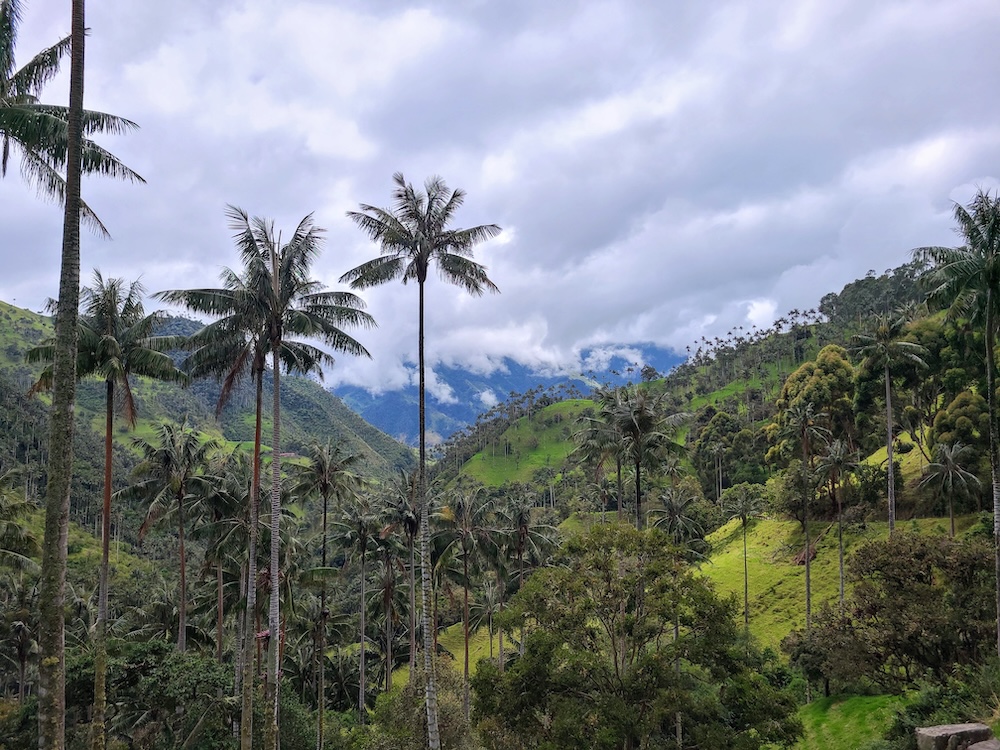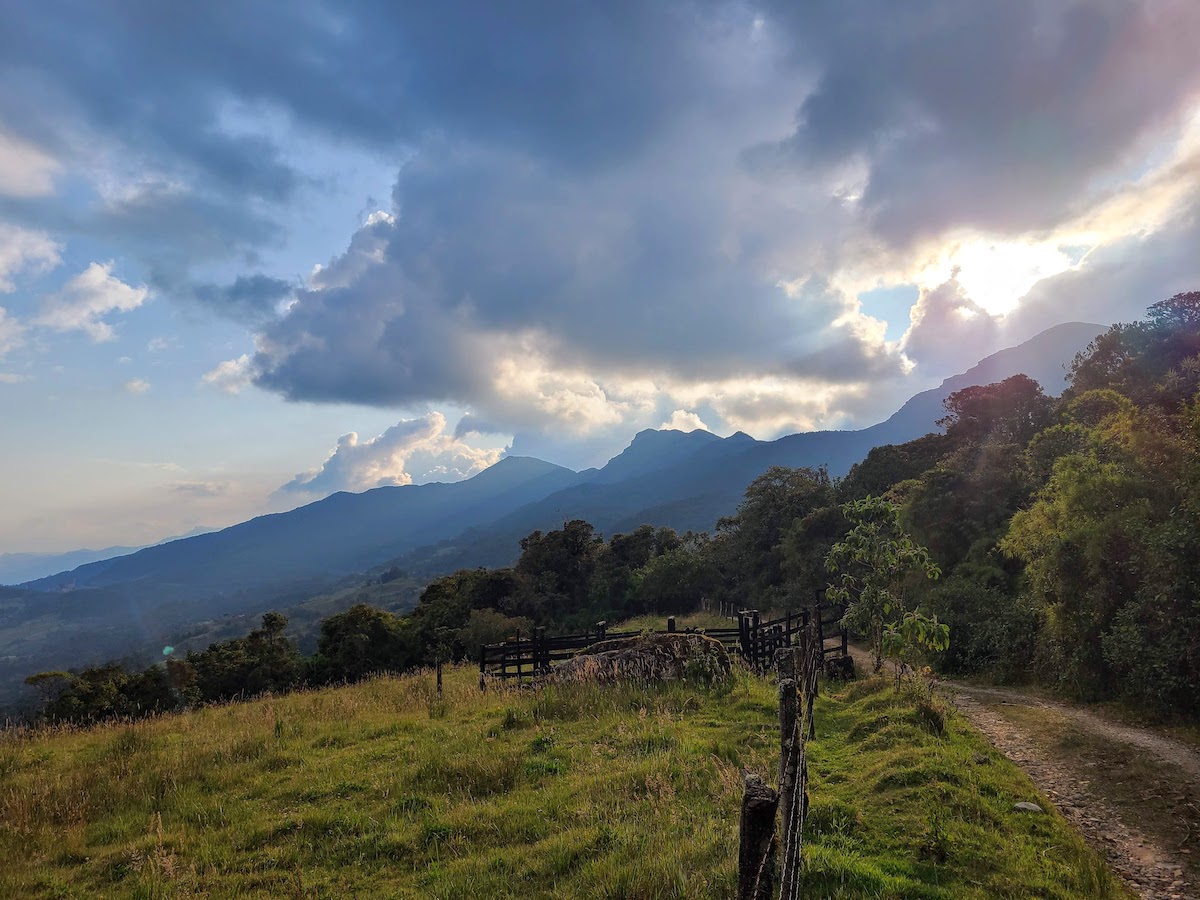One Month in Colombia: a Mix of Urban and Rural Adventures

Colombia is a country I had been wanting to travel to for quite a while. In between jobs, I finally made it happen and spent one month in Colombia. You’ll likely start in either Bogota, Medellin, or perhaps Cartagena. Bogota was by far the cheapest arrival airport for me, so that’s where I began my trip.

Where to go in Colombia?
The choices are overwhelming because there are so many cool places to visit! I planned my trip not only around birds, but on other wildlife and cultural destinations. For the most part, I didn’t get too far off the beaten path for this trip. I stuck to most of the highlights (for backpackers, at least), other than a few exceptions. I’ll share what I thought was worth it and what wasn’t, where I’d go again, and where I want to go next time.

How long should you spend in Colombia?
As much time as you can! I spent on month in Colombia and barely scratched the surface. As a general rule, I try to spend at least two full days (3 nights) in each place, longer if I can. If you only have a week or two, I recommend choosing only a couple of places to explore, ideally geographically close to one another. For example, Cartagena or Barranquilla and the Caribbean coast; Medellin and the coffee valley; Bogota, Chingaza & Chicaque National Parks.
Here’s the itinerary that I followed. The length of time is full days only, not including travel days.
Itinerary Overview:
Click on a point to be taken to a detailed post about that destination, or choose a link below
- Bogota
- Finca Suasie (mountain birding): 2 days
- Caribbean Coastal Area
- Tayrona National Park: 4 days
- Minca and El Dorado Lodge: 2 days
- Medellin
- Medellin: 3 days
- Coffee Region
- Santa Rosa: <1 day
- Salento: 2 days
- Bogota
- Bogota: 2 days (had to go back to bring my mom to the airport)
- Coffee Region (decided to spend my last week back in the Coffee Region)
- Jardin: 3 days
- Manizales: 3 days

For the most part, I traveled in a counterclockwise circle, starting and ending in Bogota. After dropping my mom off in Bogota in week 3, I had one week to go.
Initially I was planning on going out to an Hato near El Yopal (a ranch out in the eastern Plains region), but I decided it was going to be too hot (some key clothing items were stolen early on, but more on that later). I liked the coffee region so much, that I decided to go back and spend my last week there in some towns I didn’t get to the first time.
I’m not going into details here, so please check out my other posts if you want more information on any of these places!
Transportation
Colombia is well connected by buses, both within and between cities. However, rain frequently causes landslides and can delay overland travel significantly. Oftentimes, it’s fastest and nearly just as cheap to fly. I did take an overnight bus from Bogota to Medellin. The trip was fine, but a couple hours longer than scheduled (it took 12 hours) and it was cold! Definitely keep all your layers handy.

With a little patience, you can get to most places by public transportation. However, a couple of the more remote birding spots require private transportation or a rental car (unless you have an abundance of time and really like to walk!).
Cabify (like Uber) is also an option in the bigger cities, although it is not legal, so do with that what you will. I only took one taxi and the guy tried to wayyyy over charged me. It was on my very last day so I was pretty familiar with costs by that point.
Budget
Colombia is a very affordable country. I did a combination of backpacking and mid-range travel. I stayed in some nice-enough dorms for $5-13/night and a beautiful hotel for $145/night. Meals cost $2-10. Because of the transportation and some of the lodging associated with birding, I’d plan to spend $25-50 a day, which is a bit higher than the typical backpacker budget for this destination. For part of this trip I was with my mom so some costs were shared and I stayed in some nicer places than I would have on my own.

Packing
I visited all the climates within the country (not really), from sea level up to 10k feet. Packing light was a struggle! I have the Gregory Proxy 45 travel pack, which is no longer available. I like it, but since feel there’s too much internal padding that takes up valuable space. I’m thinking of changing to either the Gregory Fairview or Cotopaxi Allpa.

Here’s a list of everything I packed with links to products when possible*:
*this list looks crazy expensive. Keep in mind I acquired this clothing over several years (and pretty much always on sale). Personally, I have moved towards buying mostly/all natural-fiber clothing when possible to reduce microplastics.
- Tops
- Columbia lightweight long sleeve
- Woolx 3/4 sleeve
- Woolx short sleeve
- Tasc performance long sleeve
- Paka short sleeve x2
- Paka baselayer long sleeve (for sleeping)
- Linen short sleeve
- G.H. Bass Flannel (One of the few things I’ve bought full price and LOVE it. Have worn it for years. Great midweight for layering or evening jacket in warmer places!)
- Black midweight jacket
- Bottoms and Dresses
- Swim & Underwear
- Other
- 1 hat
- Toiletries (Toothpaste/brush, moisturizer, sunscreen, bar soap, shampoo and conditioner)
- Small towel – always handy for either washing your face or wiping off wet sandy feet. But not both.
- Headlamp!!
I think I did a pretty good job packing light for all the different climates I went to. I could have done just one dress, but I wore everything I packed.
General packing tip: try to have all or most of your tops and bottoms be interchangeable to get the most possible outfits. Also, get some packing cubes!

Don’t forget your binoculars! I have literally had nightmares about going on a birding-oriented vacation and forgetting them.
I used the 10×42 Vortex on this trip, but recently got an 8 x 32 which are so much lighter to travel with. A lot of times in the forest, you’re not looking too far anyways so don’t need as much distance.
Weather
North American winter (Dec-Mar) is the “dry” season in the northern part of the country. It’s also high season. I generally try to travel during shoulder seasons to avoid crowds, so I went end of February to the end of March and had good weather for the most part. Colombia spans a lot of climates so it’s best to look up the areas you’re interested in visiting to see what’s best.

Safety
In the past decade, Colombia has become much safer. I never felt unsafe during my trip, but I did have clothes stolen from me when I sent them out to be washed. This was near the beginning of my trip so really put a damper on the rest of my time as 2 of my 3 pairs of socks were gone. It is really hard to replace high quality wool socks in Colombia!
On future trips, I think I’ll stick to washing things in the sink until I get to an airbnb or something where I can do my own laundry. In this particular case, I got covered in ticks so I needed my clothes washed asap. More on this in the Tayrona post.
I did meet someone who was held at gunpoint in Medellin just walking in the middle of the day. They wanted her phone, she handed it over and they left. So definitely always keep your wits about you (just like you should anywhere in the world), but for the most part you should be okay.

Conclusions & Suggestions
I’ll start with some of my favorites:

I really loved the Caribbean coastal area, despite the tick encounter and biting black flies. The El Dorado Lodge near Minca was an amazing experience, but it has gotten pretty pricey as a budget traveler. Would I got back to this area? Probably! I would want to check out La Guajira, which is a peninsula in the northernmost point of Colombia and is excellent for birding.

I liked Bogota a lot and also really loved birding nearby at Finca Suasie. I would go back there with more time to be able to visit Chingaza National Park near Finca Suasie, or Chicaque National Park on the other side of Bogota.

The town of Manizales in Antioquia isn’t somewhere I planned on visiting ahead of time. I didn’t know much about it before arriving in the town, but really enjoyed it! You can easily spend a whole week here with the amount of activities nearby (birding, volcanoes, national parks, hot springs)!

Hotel Kawa in Salento was one of my mom’s favorite hotels (along with Sol de Minca) that we stayed at. The service, food, and views were excellent.
My not so favorites:

I was underwhelmed by Medellin, but probably a big reason for that is I was feeling pretty sick and wasn’t able to do everything I planned on.

The hot springs in Santa Rosa de Cabal were cool to see, but it isn’t something I’d want to repeat.
Additional Suggestions:

In addition to my suggestions above and throughout the individual posts, some other places I’d consider going next time are:
- The Amazon. I actually already have a tripped planned for summer of 2024! I plan to go to the town of Leticia and then out to El Palmari lodge. This is definitely a far-out place to get to and I’m really looking forward to it!
- The Pacific coast. From what I’ve researched, it is much less visited and has some beautiful beaches and birding opportunities
- Any of the ProAves lodges. There are so many and most are difficult to get to, so will be hard to visit all but it would be amazing! Fun fact, I actually saw the yellow-eared parrot (their logo) near Salento.
Birds

I’ve hardly talked about birds in this post, but each individual destination goes into much more detail. As you probably know, Colombia is one of the best and most species-rich countries to visit for birding. So wherever you visit you’re bound to see something exciting! I added 149 birds to my life list and saw 179 species total (easily generated by eBird Trip Reports–so cool!). This is about 10% of all species found in Colombia. I can’t wait to go back soon and add more!

